Wewelsburg
В.Л.Телицин: Святой Грааль и Третий рейх, 2004
Чаша Грааля, Копье Судьбы, меч Св. Маврикия – все эти евангельские реликвии ассоциируются в нашем сознании как нечто мифологическое, сказочное. Но древние реликвии, если верить преданиям, обладают сверхъестественными возможностями. Тот, кто завладеет ими, откроет путь к мировому господству. Поиск этих реликвий связан с именами великих тиранов и диктаторов, полководцев и государей, оставивших в истории кровавый след.
И, конечно, такие ценные библейские реликвии, как Чаша Грааля и Копье Судьбы, не могли не оказаться в Третьем рейхе, в руках Адольфа Гитлера. Он любил повторять: "Я иду туда, куда мне предписывает идти Провидение. Я верю в магию Копья". Копье Судьбы должно было аккумулировать магические силы, унаследованные в крови богоизбранного народа. Таким народом Гитлер считал арийцев.
Н. Гудрик-Кларк Оккультные корни нацизма. Тайные арийские культы и их влияние на нацистскую идеологию.
Глава 14 КАРЛ МАРИЯ ВИЛИГУТ ЛИЧНЫЙ МАГ ГЕНРИХА ГИММЛЕРА
Арманисты, ариософисты и рунические оккультисты, с которыми мы встретились до сих пор, обладали в той иной степени стереотипным мировоззрением. В их доктринах шла речь о возвышенных и сверхчеловеческих предках, чей древний гностический закон нес арийцам мудрость, власть и благополучие, пока не был вытеснен чуждыми и враждебными культурами. Предполагалось, что эти предшественники скрывали свое венценосное знание в таинственных формах (рунах, мифах, традиций) и оно могло быть расшифровано только их духовными наследниками, которыми и являлись современные ариософы. Лист, Ланц фон Либенфельс, Горслебен и другие выдающиеся ученики гностической сокровищницы одушевляли собой жизнь секты, некоторые из их идей или символов могли проникнуть в более широкое социаль ное окружение. Таким образом, эти люди, конечно, влияли на общее мифотворческое настроение нацистской эры, но нельзя сказать, что они прямо определяли пос тупки тех, кто занимал ответственные посты и был наделен реальной политической властью и ответствен ностью.
Жизнь Тайного короля Германии
Фигура Вилигута бесконечно туманна. Никому не известный в начале XX века в Австрии, в 30-х он публиковал свои идеи лишь в мелких журналах, а уже в 1933 году вошёл в SS Гиммлера, где занимался написанием приватных докладов своему начальнику. Из-за скудных сведений сложно точно оценить его роль и степень влияния на оккультную культуру Германии начала XX столетия.
Ранний период
(1866-1919)
К тому времени, как роль Вилигута стала значимой в истории оккультизма центральной Европы, он уже достиг зрелых лет. Свою первую книгу, «Seyfrieds Runen» («Зайфридские руны») он опубликовал в возрасте 37 лет, в чине капитана австрийской армии.
The original Indiana Jones: Otto Rahn and the temple of doom
As Indiana Jones returns to our screens, John Preston looks at the Nazi archaeologist who inspired Spielberg's hero, and finds a story more bizarre than anything the director could have dreamt of
Very little is certain in the short life of Otto Rahn. But one of the few things one can with any confidence say about him is that he looked nothing like Harrison Ford. Yet Rahn, small and weasel-faced, with a hesitant, toothy smile and hair like a neatly contoured oil slick, undoubtedly served as inspiration for Ford's most famous role, Indiana Jones.
Like Jones, Rahn was an archaeologist, like him he fell foul of the Nazis and like him he was obsessed with finding the Holy Grail - the cup reputedly used to catch Christ's blood when he was crucified. But whereas Jones rode the Grail-train to box-office glory, Rahn's obsession ended up costing him his life.
Rennes-le-Chateau
Here, on the northern edge of the Pyrenees some 110 years ago, a Catholic priest named Bérengier Saunière became unbelievably wealthy overnight, seemingly after discovering something of immense value or significance in his church. He is said to have spent lavishly redesigning the tiny hill-top structure, building a strange belvedere tower called Tour Magdala and constructing a guest house known as Villa Bethania. He is also reported to have started acting oddly, erasing inscriptions on tomb stones, carrying out nocturnal excavations in both the church and churchyard, and receiving visitors totally beyond his standing as a parish curé in a rural part of southern France.
Otto Rahn – Otto Skorzeny Raiders of the Found Ark?
The founders of the Third Reich were esoterically involved with matters which unavoidably skirt the mysteries associated with the valley of Rennes-le-Chateau. Their interests were not however, confined to the ephemeral, there is evidence of the tenacity with which they pursued the material associations of the valley. Many assorted books on Rennes-le-Chateau mention that a battalion of German mining engineers made excavations in the area during World War Two.
There is a real, existing mountain in the south of France which is rumored to house the Holy Grail...
There is a real, existing mountain in the south of France which is rumored to house the Holy Grail. In fact, local legend says that the Grail has always been there, ever since a dove from Heaven descended upon the mountain, split it open with its beak, and dropped the Grail inside. This is the mountain of Montsegur, which was the last Cathari stronghold defeated by the Albigensian Crusade. (This was the only crusade waged by Christiandom against people who were Christians themselves.) The term “Cathar” was a catch-all term used by the Catholic Church for the numerous Gnostic Christian cults that proliferated across the Languedoc region of France during the Middle Ages. As they grew in numbers, they gradually became a threat to orthodox Christianity.
Holy Grail
Since the publication of The Da Vinci Code the debate rages as to what and where the true Holy Grail exists
Taken as a whole, the various renditions of the Holy Grail legend, whether they derive from Europe or Asia, imply that there are many forms that the Holy Grail can take.
These legends assert that the Holy Grail can be anything from the platter mentioned by Chrétien de Troyes, the first author of the Holy Grail legend, to the Cup of Christ alluded to by Robert de Boron, or even the Stone of Heaven mentioned by Wolfram von Eschenbach in Parzival.
Отто Ран и поиски Святого Грааля
Отто Ран (1904-1938 гг.), о котором говорили как о талантливом молодом литераторе и историке, был одной из действительно ярких личностей этого века. До своей загадочной смерти в возрасте 35 лет он успел написать две книги о катарах южной Франции: "Крестовый поход против Грааля" ("Kreuzzug gegen den Gral") и "Двор Люцифера" ("Luzifers Hofgesind"). О его жизни и трагической смерти ходят легенды. Хотя его книги оказали влияние на таких известных русскому читателю авторов как Тревор Равенскрофт (Trevor Ravenscroft) и Жан-Мишель Анжебер (Jean-Michel Angebert), на русский язык они никогда не переводились. В бестселлере 1982 года "Святая кровь, святой Грааль" (Holy Blood, Holy Grail - в русском переводе "Священная загадка") имя Отто Рана упоминается в небольшом, но интригующем примечании.
Otto Rahn and the Quest for the Holy Grail
Otto Rahn (1904-1938), described as a gifted young author and historian, was one of this century's truly fascinating figures. Prior to his mysterious death, at age 35, he wrote two books about the Cathars of southern France: *Kreuzzug gegen den Gral* ("Crusade Against the Grail") and *Luzifers Hofgesinf* ("Lucifer's Court"). Legends continue to surround both his life and tragic death. While his books influenced such authors as Trevor Ravenscroft and Jean-Michel Angebert, they were never translated into English. In the 1982 best selling book *Holy Blood, Holy Grail*, Otto Rahn's name appears in a small but intriguing footnote. Otto Rahn believed that he had found the location of the Holy Grail Mountain, the Montsalvat of legend, in the Cathar mountain fortress of Montsegur in the French Pyrenees. He was, says Prof. Joscelyn Godwin, "largely responsible for the mythological complex that associated the Cathars and Montsegur with the Holy Grail and its Castle."
Norma Lorre Goodrich in her own highly acclaimed work *The Holy Grail* pays tribute to Otto Rahn's "Crusade Against the Grail" describing it as "a wonderful book, a monument to this German idealist author, who died mysteriously during a descent in the Alps."

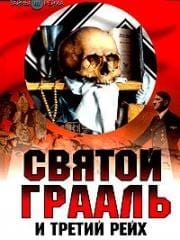

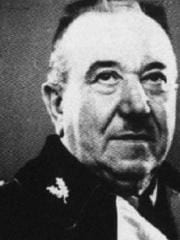

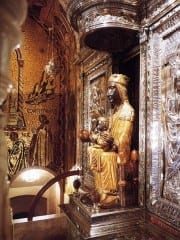
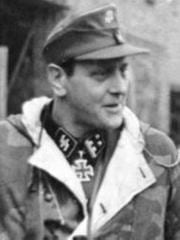
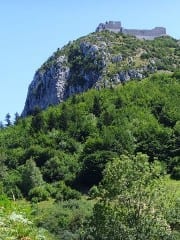

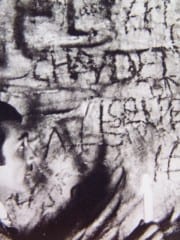
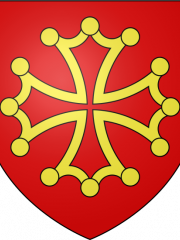
Comentarios recientes
hace 13 años 17 semanas
hace 13 años 18 semanas
hace 13 años 18 semanas
hace 13 años 18 semanas
hace 13 años 21 semanas
hace 13 años 27 semanas